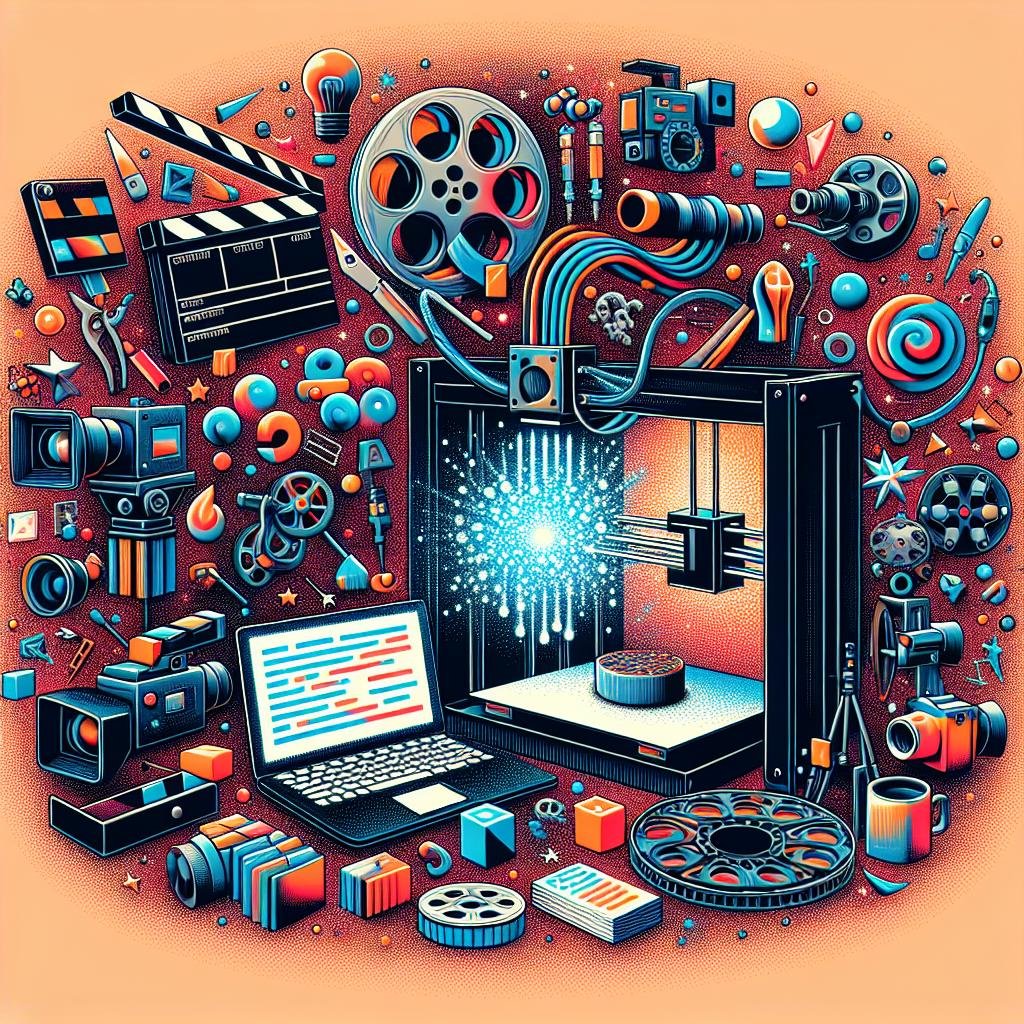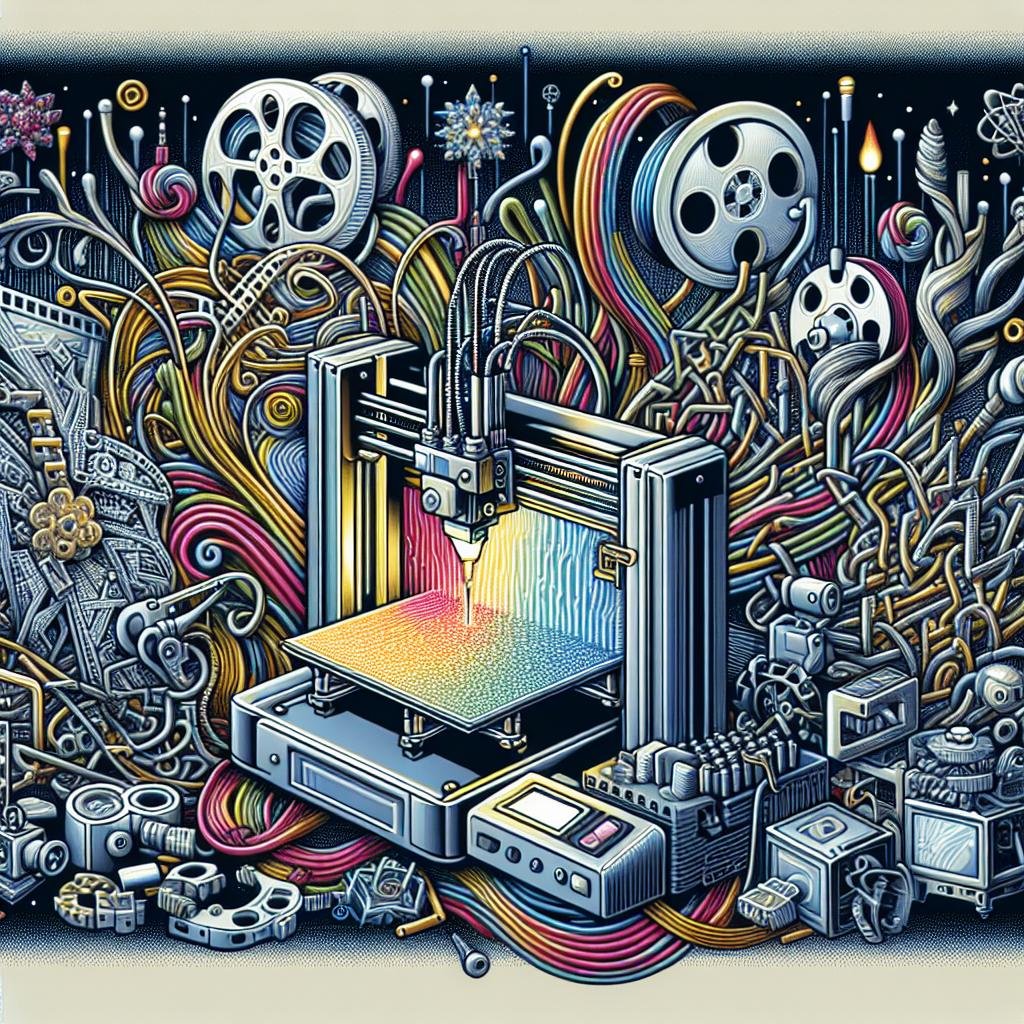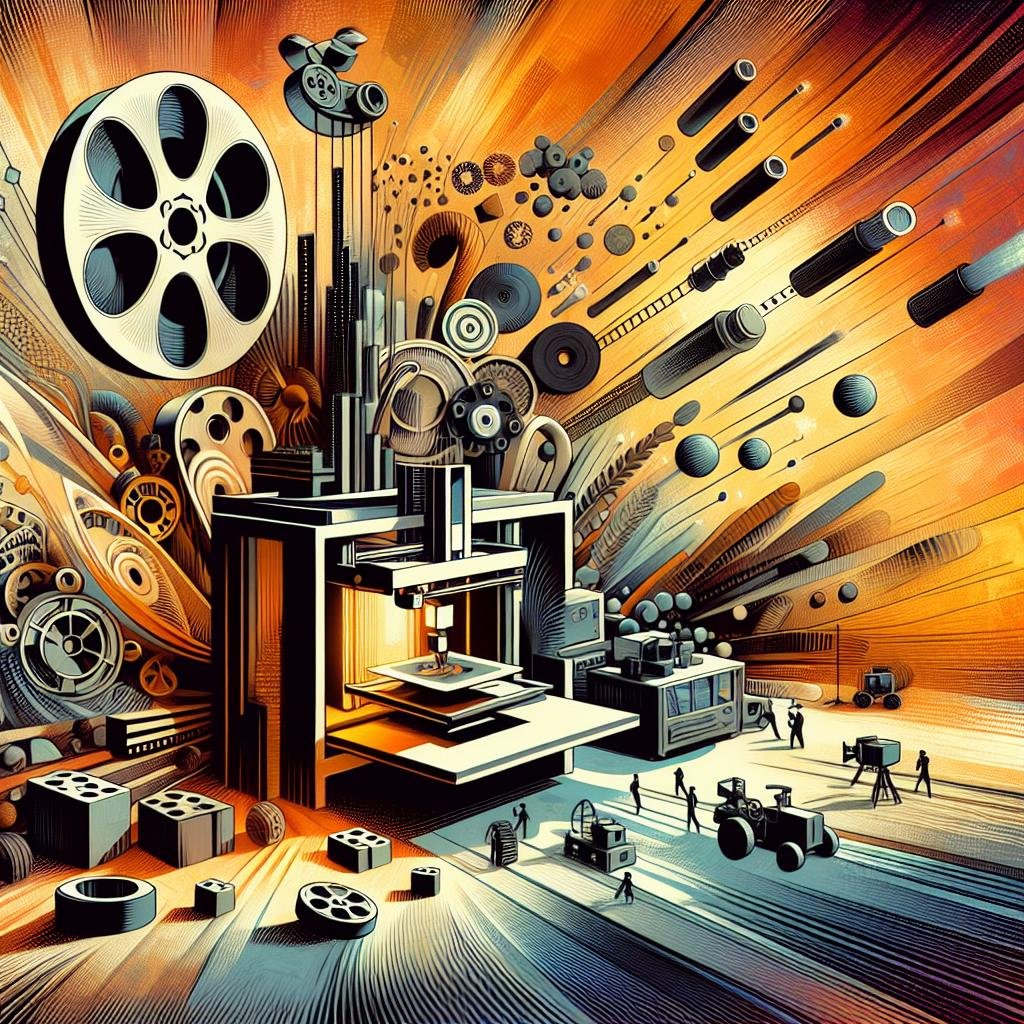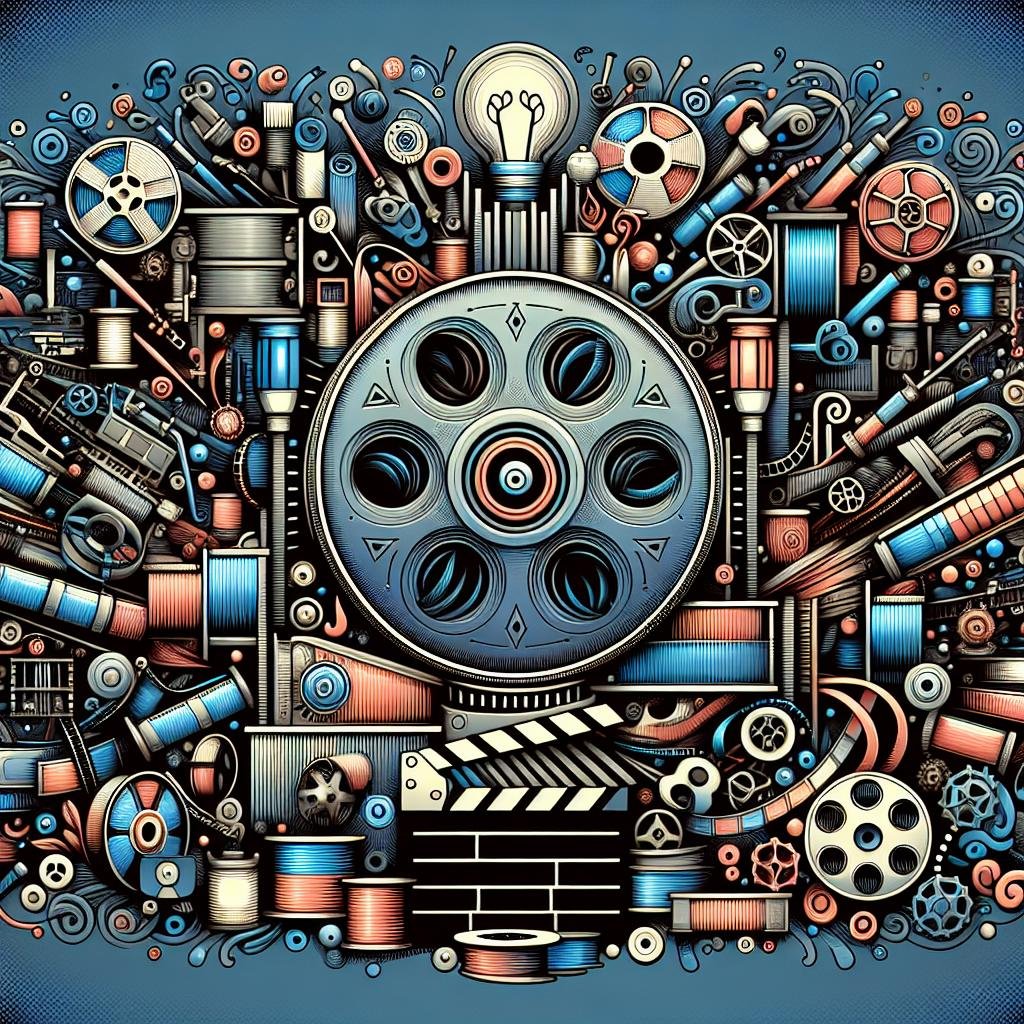In the dazzling realm of cinema, where the impossible springs to life and imagination knows no bounds, there’s a silent partner reshaping the landscape of filmmaking: 3D printing. Once relegated to sci-fi dreams, this groundbreaking technology has seamlessly woven itself into the tapestry of the film industry, transforming special effects and reaching into uncharted territories. Picture this: bespoke props manifested straight from the digital ether, intricate set pieces crafted wiht meticulous precision, and costumes spun like magic from virtual designs. Join us on a cinematic journey as we delve into the mesmerizing role of 3D printing in film—where innovation rides shotgun and creativity has the final cut. Welcome to a behind-the-scenes adventure that explores how this technological marvel is not just enhancing the magic of movies but is scripting a whole new narrative in the world of film.
Crafting Cinematic Magic The Role of 3D Printing in Special Effects
In the ever-evolving world of cinema, where storytelling and technology go hand in hand, the advent of 3D printing has ushered in a new era of innovation in special effects. Film production teams are leveraging this technology to bring impossible worlds and creatures to life with unprecedented detail and realism. By utilizing 3D printing, designers can prototype and iterate on props and costumes faster than ever before, turning concepts into tangible reality in a matter of days. This flexibility allows artists to push the boundaries of their creativity, crafting intricate designs that might be too elaborate or delicate for customary manufacturing processes.
From fantastical set pieces to lifelike character models, the use of 3D printing unlocks a plethora of possibilities for the film industry. Some standout benefits include:
- Speed: Rapid prototyping and production save valuable time during pre-production and production phases.
- Accuracy: Precision printing reproduces even the most complicated details with fidelity.
- Cost-effectiveness: Reduced material waste and labor costs offer budgetary advantages.
| Aspect | Traditional method | 3D Printing |
|---|---|---|
| Production Time | Weeks to Months | Days to Weeks |
| Detail Level | Moderate | High |
| flexibility | Limited | Unlimited |
Embracing 3D printing transforms the vision of filmmakers, enabling them to explore realms that were previously considered unreachable. This conversion doesn’t stop at aesthetics; it serves as a testament to the boundless ingenuity and imagination that drive the cinematic arts forward.

Revolutionizing Set Design How 3D Printing Enhances Visual Storytelling
The emergence of 3D printing in set design has ushered in a new era of visual storytelling, carving out fresh avenues for creativity and innovation. Imagine detailed cityscapes coming to life, not through months of exhaustive construction, but through the swift and precise technology of 3D printing, all while keeping budgets in check. This shift allows production teams to craft intricate details, personalize environments tailored around character narratives, and respond with agility to vision changes.Say goodbye to the cumbersome logistics of traditional set construction—as props, architectural adornments, and even entire fictional worlds become more accessible, allowing directors to explore previously unimaginable visual spectacles.
Beyond the ‘wow’ factor of swift creation, 3D printing enriches the emotional landscape of a film. With the introduction of this technology, the ability to iterate and experiment has expanded tremendously, encouraging filmmakers to push creative boundaries. Here’s how 3D printing is reshaping the industry:
- Time Efficiency: Fast turnaround from concept design to tangible model.
- Cost-Effectiveness: Reduces material waste and production costs.
- complexity and Detail: Facilitates the creation of intricate details not feasible with traditional techniques.
- Customization: Tailor scenes and props to fit unique narratives, achieving creative vision with greater flexibility.
| Aspect | Benefit |
|---|---|
| Speed | Models crafted in hours |
| Flexibility | Easy modifications |
| Cost | Lowers budget constraints |

Behind the Scenes Innovations Exploring 3D Printing Techniques in Filmmaking
Film studios and effects houses around the world have embraced the marvels of 3D printing, harnessing its potential to bring previously unimaginable designs to life. from intricately crafted props to hyper-realistic creature models, 3D printing has expanded the creative horizons of filmmakers. Imagine entire set pieces being designed on a computer and then brought into the physical world with impeccable detail and astounding accuracy. This technology allows for a level of customization that was once a logistical nightmare, ensuring that directors and designers can tweak every variable until the visions align perfectly with what is cherished in their creativity-bounding hearts.
in the bustling world of special effects, speed and precision are key. 3D printing provides an edge in both aspects by enabling an efficient workflow that minimizes the need for traditional, labor-intensive procedures. Consider these advantages:
- Rapid prototyping: Get instant feedback on designs and make adjustments on the fly.
- Cost-effective production: Reduced material waste and the ability to revise and iterate help save budget.
- Enhanced creativity: Traditional limits are bypassed, opening doors to an infinite array of imaginative possibilities.
| Request | Benefit |
|---|---|
| prop Design | Fast iteration and intricate detail |
| Creature Effect | Hyper-realistic molds and animatronics |
| Costume | Seamless and customizable fits |

From Concept to Creation Recommendations for Integrating 3D Printing in Film Production
As the film industry continuously seeks innovative ways to captivate audiences, the integration of 3D printing stimulates creative processes from conceptualization to the final render. Pre-production planning frequently enough involves crafting intricate models that once required critically important manual detailing by highly skilled artisans. Today, filmmakers are leveraging 3D printing to fast-track visualization processes, producing highly detailed, accurate designs that reduce the need for physical prototypes. The ability to quickly iterate and modify concepts allows filmmakers to explore a wider array of options when conceptualizing both characters and settings. This technology uniquely facilitates a shift from static digital sketches to tangible, detailed representations, enabling efficient dialogue of complex ideas among creative teams.
The collaboration across production departments becomes seamless through the standardized use of digital models that can be conveniently printed anywhere, significantly reducing costs and time spent on logistics. Costume designers find immense value in the ability to produce bespoke accessories and detailed armor pieces that perfectly fit actors, while special effects teams utilize this technology to construct lifelike props that enhance storytelling. Furthermore, 3D printers empower filmmakers to produce sustainable solutions, using recycled materials that support eco-friendly initiatives within the production cycle. Here’s a quick look at how various departments might utilize 3D printing:
- Art Department: Crafting set miniatures and architectural elements with precision.
- Prop Makers: Developing unique, one-of-a-kind items quickly and accurately.
- Costume Designers: Creating custom-fitted components,from jewelry to intricate masks.
- Special Effects Crew: Fabricating durable, detailed models for dynamic scenes.
| Department | Use of 3D Printing |
|---|---|
| Art Department | Modeling surroundings Props |
| Prop Makers | Crafting unique Tools and Weapons |
| Costume Designers | Designing Custom-Fit Accessories |
| Special Effects Crew | Simulating Creature features |
Q&A
Q&A: Exploring 3D Printing in the film Industry: special Effects and beyond
Q1: What is the role of 3D printing in creating special effects for films?
A1: 3D printing has revolutionized the world of special effects in films by allowing creators to bring their wildest imaginations to life. With 3D printing, filmmakers can produce intricate props, detailed costumes, and even complex creature models with unprecedented precision and efficiency. Instead of sculpting by hand or using traditional molding techniques, artists can design digitally and print objects in layers, resulting in highly detailed models that blend seamlessly on screen.
Q2: Beyond special effects, how else is 3D printing being utilized in the film industry?
A2: Beyond just the realm of special effects, 3D printing is used in various creative and practical areas within the film industry. As an example, it aids in prototyping set designs and architectural models, allowing directors and designers to visualize and tweak their environments before they are built. It also plays a vital role in costume design, enabling costume departments to craft intricate pieces or armor that fit actors perfectly. Moreover,3D printing is helping with the creation of everything from personalized props to complicated rigging components,enhancing the overall production process.
Q3: Can you share an example of a film that successfully used 3D printing for its special effects?
A3: Certainly! One notable example is the film “Black Panther,” where 3D printing technology was instrumental in creating the stunning costumes and accessories that graced the big screen. The advanced designs and complex textures of the suits worn by characters were made possible through 3D printing, showcasing intricate detail that traditional methods would have struggled to replicate. This technique not only enhanced the aesthetics but also ensured a perfect fit for each actor, adding to the film’s visual impact.
Q4: how does 3D printing influence creativity and innovation among filmmakers and designers?
A4: 3D printing unleashes new horizons of creativity and innovation within the film industry by removing traditional limitations.Filmmakers and designers can experiment with complex designs and shapes that were previously deemed too time-consuming or impossible to create. The technology offers limitless possibilities, from rapid prototyping new ideas to iteratively refining designs with ease. This flexibility empowers creatives to push the boundaries of storytelling and visual artistry, leading to new and exciting cinematic experiences.Q5: What challenges might filmmakers face when integrating 3D printing technology into their projects?
A5: While 3D printing opens up myriad opportunities,it does come with its set of challenges. The cost of high-quality 3D printers and materials can be significant, especially for smaller productions. Additionally, the process requires skilled technicians and designers who are adept in both digital modeling and the intricacies of 3D printing technology. There’s also the learning curve associated with incorporating this tech seamlessly into existing workflows. Despite these hurdles, the ever-evolving nature of 3D printing continues to make it an invaluable tool in filmmaking.
Q6: In your opinion, what does the future hold for 3D printing in the film industry?
A6: The future of 3D printing in the film industry is incredibly promising. as the technology becomes more affordable and accessible, we can expect it to become a standard part of the filmmaking toolkit, much like computer graphics and digital editing are today. Innovations in faster printing speeds and broader ranges of printable materials could further enhance the realism and immersion of film worlds. Ultimately, 3D printing will continue to expand the creative potential of filmmakers, ushering in a new era of cinematic magic where the only limit is the imagination.
To Wrap It Up
As the credits roll on our exploration of 3D printing in the film industry, it’s clear that this technology is no mere cameo; it’s a star player reshaping the landscape of cinematic creativity. From crafting fantastical creatures that leap off the page to producing intricate set pieces with unmatched precision, 3D printing is revolutionizing how filmmakers bring their visionary worlds to life. But this is only the beginning of the story. As innovation continues to drive the narrative, who knows what thrilling developments await just over the horizon? So, weather you’re a filmmaker, a tech enthusiast, or simply a movie buff, keep your eyes peeled for the next blockbuster transformation—and remember, in this new age of storytelling, imagination isn’t just a spectator sport. It’s a universe waiting to be printed. Until next time,keep dreaming big and printing bigger!

